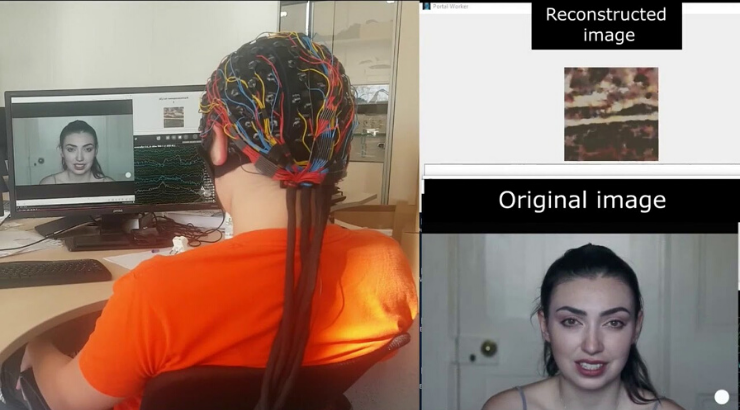Science & Tech
New AI Decodes Your Brainwaves and Draws Whatever You’re Looking At
“If you wish to understand the Universe think of energy, frequency, and vibration.”

(TMU) — Waves are all around us. Everywhere we go we encounter them. From Texas to New York and from China to Canada, you’ll always have waves vibrating and creating part (even most) of your reality. We can find them in the form of sound, images, and even heat.
As Nikola Tesla once said:
“If you wish to understand the Universe think of energy, frequency, and vibration.”
And now, a team of scientists from the Moscow Institute of Physics and Technology and Russian corporation Neurobotics is understanding the universe inside our heads thanks to a device they created that is capable of “reading” the mind of the user. Science is always breaking the barrier between fiction and reality.
The team placed a cap of electrodes on the scalp of participants so they could record their brain waves (produced by synchronized electrical pulses from masses of neurons communicating with each other). This technique is noninvasive, with information gathered through an electrode-covered electroencephalography (EEG) headset.
They then had each participant watch 20 minutes worth of 10-second-long video fragments. The subject of each fragment fell into one of five categories and the researchers found they could tell which category of video a participant was watching just by looking at their EEG data.
In the researcher’s words:
“Here we hypothesize that observing the visual stimuli of different categories trigger distinct brain states that can be decoded from noninvasive EEG recordings. We introduce an effective closed-loop BCI system that reconstructs the observed or imagined stimuli images from the co-occurring brain wave parameters. The reconstructed images are presented to the subject as a visual feedback.”
To better understand the concept of brainwaves, let’s work with an analogy. We can think of brainwaves as musical notes, the low-frequency waves are like a deeply penetrating drum beat, while the higher frequency brainwaves are more like a subtle high pitched flute. Like a symphony, the higher and lower frequencies link and cohere with each other through harmonics.
We can understand this process as a transformation of waves to images.
Operation algorithm of the brain-computer interface (BCI) system. Credit: Anatoly Bobe/Neurobotics, and @tsarcyanide/MIPT Press Office
“We did not expect that it contains sufficient information to even partially reconstruct an image observed by a person. Yet it turned out to be quite possible,” Grigory Rashkov, a junior researcher at MIPT and a programmer at Neurorobotics, said.
Of the method being noninvasive, Rashkov explained:
“Under present-day technology, the invasive neural interfaces envisioned by Elon Musk face the challenges of complex surgery and rapid deterioration due to natural processes—they oxidize and fail within several months.”
“We hope we can eventually design more affordable neural interfaces that do not require implantation,” Rashkov said.
As it turns out, the oil industry uses a similar method to find oilfields through processing frequencies that are sent to the subsurface of the earth to get an “image” of the layers of rock and fluids under our feet. That’s called Seismics.
It seems Tesla was right—we can understand the universe (even inside our heads) using frequency (and a touch of math, too).
By Manuel García Aguilar | Creative Commons | TheMindUnleashed.com
Typos, corrections and/or news tips? Email us at Contact@TheMindUnleashed.com
